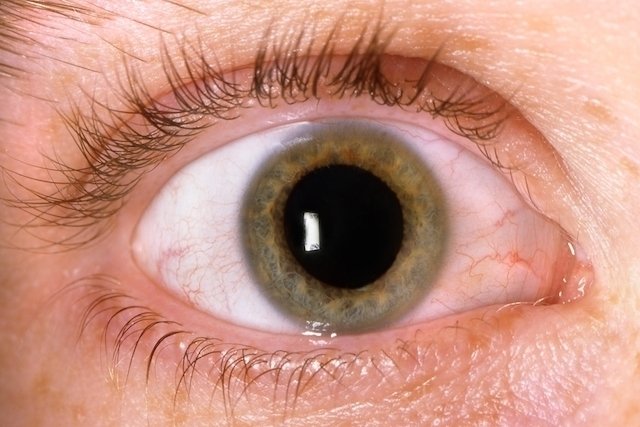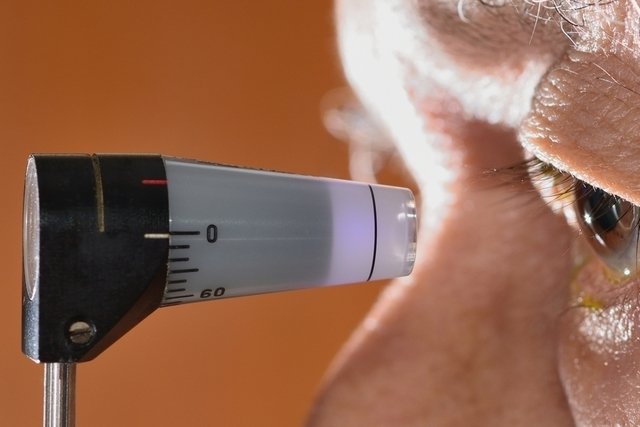The only way to confirm the diagnosis of glaucoma is to go to the ophthalmologist to carry out tests that can identify whether the pressure inside the eye is high, which is what characterizes the disease.
Normally, glaucoma exams are carried out when there are signs of suspected glaucoma, such as changes in the routine eye exam, but they can also be requested as a form of prevention in people who are at greater risk of developing glaucoma, especially when there is a family history of the disease. .
See what the possible symptoms of glaucoma are and who is most at risk.

The main tests that the ophthalmologist may order to confirm the diagnosis of glaucoma include:
1. Tonometry (eye pressure)
The test to assess eye pressure, also known as tonometry, evaluates the pressure inside the eye which, in cases of glaucoma, is normally greater than 22 mmHg.
How is done: The ophthalmologist applies eye drops to numb the eye and then uses a device, called a tonometer, to apply slight pressure to the eye to assess the pressure inside the eye.
2. Ophthalmoscopy (optic nerve)
The examination to evaluate the optic nerve, scientifically called ophthalmoscopy, is a test that examines the shape and color of the optic nerve to identify whether there are lesions that may have been caused by glaucoma.
How is done: The doctor applies eye drops to dilate the pupil of the eye and then uses a small flashlight to illuminate the eye and observe the optic nerve, assessing whether there are changes in the nerve.
3. Perimetria (campo visual)
The examination to evaluate the visual field, also called perimetry, helps the ophthalmologist identify whether there are losses in the field of vision caused by glaucoma, especially in lateral vision.
How is done: In the case of the Confrontation Field, the ophthalmologist asks the patient to look straight ahead without moving their eyes and then passes a flashlight from one side to the other in front of their eyes, and the patient must always inform them that they can no longer see the light. The most used, however, is Automated Perimetry. See more details about the Campimetry exam.

4. Gonioscopy (type of glaucoma)
The test used to evaluate the type of glaucoma is gonioscopy, which determines the angle between the iris and the cornea. When it is open, it can be a sign of chronic open-angle glaucoma and when it is narrow, it can be a sign of angle-closure glaucoma. whether chronic or acute.
How is done: The doctor applies anesthetic drops to the eye and then places a lens over the eye that contains a small mirror that allows the angle formed between the iris and the cornea to be observed.
5. Pachymetry (corneal thickness)
The examination to assess the thickness of the cornea, also known as pachymetry, helps the doctor to understand whether the intraocular pressure reading, provided by tonometry, is correct or whether it is affected by a very thick cornea, for example.
How is done: The ophthalmologist places a small device in front of each eye that measures the thickness of the cornea.
Watch the following video and understand better what glaucoma is and what treatment options are available:
Other necessary exams
In addition to the tests indicated above, the ophthalmologist may also order other imaging tests to better evaluate the ocular structures. Some of these exams include: Color Retinography, Anerythral Retinography, Optical Coherence Tomography (OCT), GDx vcc and HRT, for example.
If your glaucoma test indicates that you have glaucoma, here’s how to treat glaucoma.
Online glaucoma risk test
This test serves to guide you about your risk of developing glaucoma, based on your family history and other risk factors:
However, this test does not replace a doctor’s diagnosis, and it is always recommended to consult an ophthalmologist if you suspect you have glaucoma.
Bibliography
- GLAUCOMA RESEARCH FOUNDATION. Five common Glaucoma tests. Available at: <https://www.glaucoma.org/glaucoma/diagnostic-tests.php>. Accessed on 17 Jul 2019
- NHS. Glaucoma: diagnosis. Available at: <https://www.nhs.uk/conditions/glaucoma/diagnosis/>. Accessed on 17 Jul 2019

Sign up for our newsletter and stay up to date with exclusive news
that can transform your routine!
Warning: Undefined array key "title" in /home/storelat/public_html/wp-content/plugins/link-whisper-premium/templates/frontend/related-posts.php on line 12
Warning: Undefined array key "title_tag" in /home/storelat/public_html/wp-content/plugins/link-whisper-premium/templates/frontend/related-posts.php on line 13




